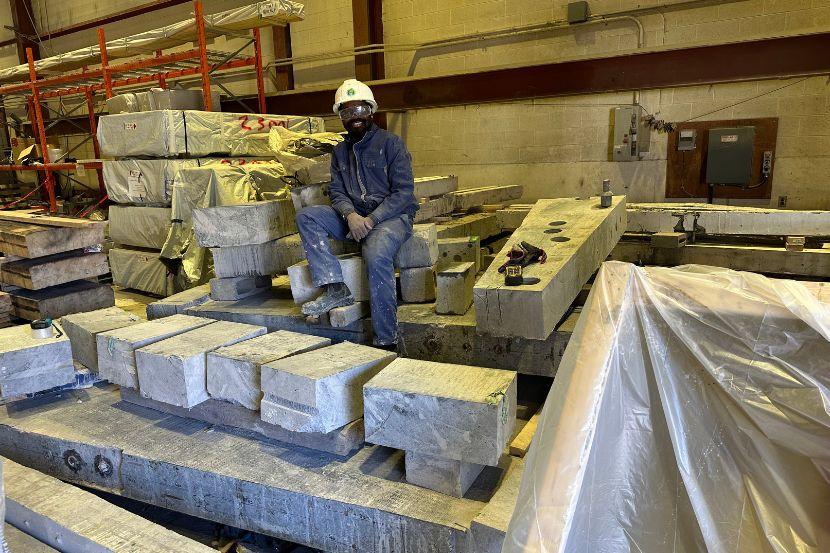Across Canada, many bridges and roads are showing signs of age. Exposure to harsh weather and decades of wear have left more than 37% of our transportation infrastructure in some state of deterioration, with over 12% considered to be in critical condition.
“Bridges don’t simply disappear. They deteriorate, forcing us to decide whether to repair or replace them,” says Issa Fowai, PhD candidate in uOttawa’s civil engineering program.
A sustainable approach to Canada’s aging infrastructure
Rebuilding infrastructure is expensive and resource intensive. Repairing and extending the lifespan of existing structures offers a more sustainable, environmentally responsible approach.
This is the basis of Fowai’s research: finding innovative ways to keep our infrastructure safe and serviceable for longer.
Fowai’s research centres on the use of advanced composite materials to strengthen deteriorating bridges. He’s currently conducting an in-depth study on the performance of composite structural repairs applied to the original Champlain Bridge in Montreal before it was dismantled in 2020, after just 57 years of service.
That short lifespan, and the $225.7 million demolition cost (excluding replacement), raised many concerns about long-term infrastructure durability.
Making bridges last longer
To prevent such premature deterioration, Fowai is analyzing salvaged structural components from the Champlain Bridge, using a combination of non-destructive and traditional testing techniques, finite element simulations and microanalysis.
Some of his findings point to problems that started during the repair process itself. “Our research has shown that some of the durability issues specific to the repair were initiated at the installation stage,” he says. “Material incompatibility or the curing temperature for the adhesive may not have been appropriate, and that significantly influenced performance.”
Fowai also discovered that current design codes and modelling techniques don’t always hold up when facing heavy use and extreme weather over long periods of time.
Fowai has designed and built custom experimental setups at the University of Ottawa that help characterize how the repair materials bond with existing concrete. These tools are generating insight into the relationship between material condition and structural performance.
This is the first global study to comprehensively examine how composite materials perform in real-world infrastructure repairs. It has already sparked collaborations with institutions across Canada and internationally.
Fowai aims to provide practical recommendations to both the scientific community and the Crown corporation responsible for managing the Champlain Bridge. By understanding what went wrong with one of Canada’s most iconic bridges, we can make better decisions about how we build and repair future structures.

Making the future, one bridge at a time
Fowai is committed to better infrastructure guidelines and maintenance practices. “I want to contribute to improving guidelines for the rehabilitation and maintenance of critical concrete infrastructures in Canada, saving taxpayers’ money while ensuring we have resilient, safe and durable structures in our communities,” he says.
He also hopes to expand his research into digital twin technologies, virtual models that integrate real-time monitoring systems to help track bridge conditions.
This type of proactive bridge management system could revolutionize the way Canada inspects and maintains its infrastructure.
Sustainable and resilient infrastructure, a uOttawa Engineering priority
Issa Fowai was awarded first place in the sustainable and resilient infrastructure category at the 2025 Engineering and Computer Science Graduate Poster Competition held during Research Day at the Faculty of Engineering.
Faculty of Engineering research on sustainable and resilient infrastructure focuses on developing smarter, safer and more sustainable solutions to design, build and protect the systems that support our communities.


